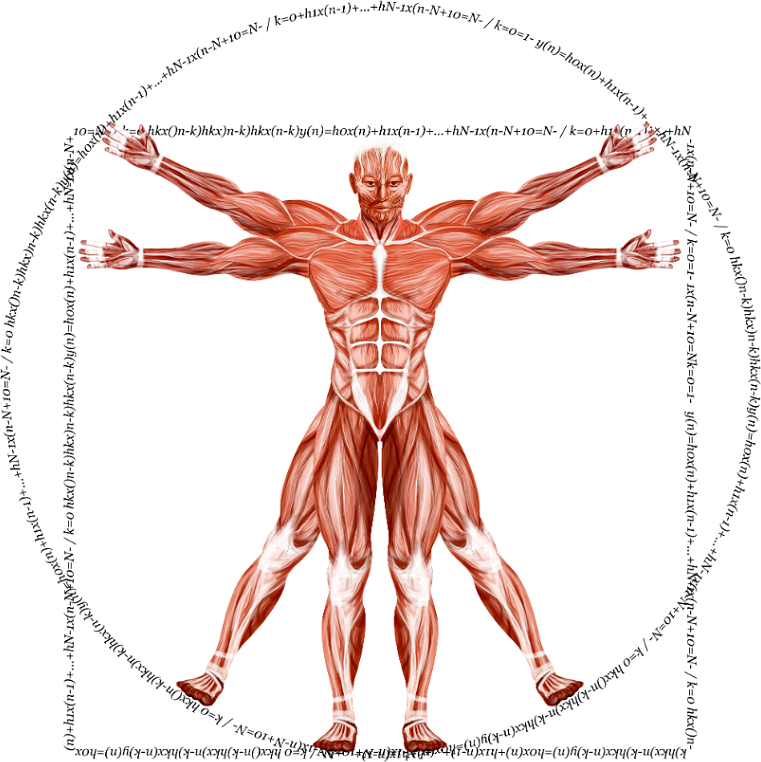11 Little-Known Muscle Growth Exercises You Should Try
Revolutionize your fitness with muscle growth exercises that deliver
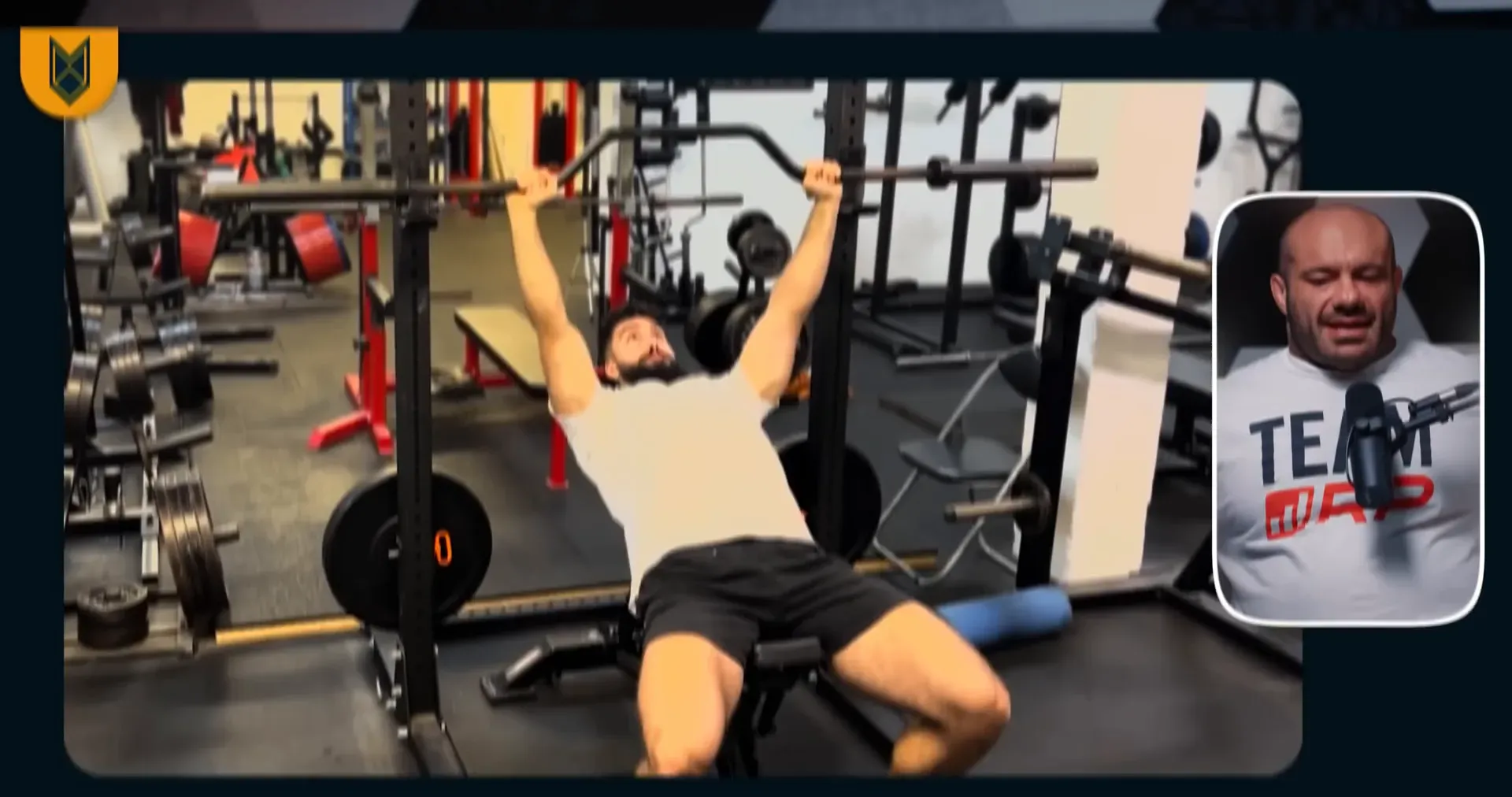
Key Takeaways
- You’re missing hidden gems – JM Press, dips, and belt squats are underrated but POWERFUL for muscle growth!
- Your back deserves pull-ups – Skip the machines—pull-ups build width and thickness better than cables.
- You can train pain-free – Belt squats and Nordic curls protect your joints while delivering serious gains.
- Your arms need better isolation – Try lying bicep curls and cable flexion rows to keep tension where it matters!
- You control the risk – Dips DON’T wreck shoulders—bad form does! Keep your shoulders down and back for safety.
Want to train smarter and build muscle faster with the best muscle growth exercises?
In this expert review, we analyze, critique, and expand on Dr. Milo Wolf’s insights on muscle growth exercises that lifters often overlook. Our team, including a veteran exercise scientist, fact-checks his approach to ensure you get the best results with the safest, most effective methods.
Why trust this guide?
- Expert-reviewed by fitness professionals with 300+ published articles
- Uncommon tips to improve exercise selection and target weak points
- A pro-designed workout plan based on the article’s top takeaways
Keep reading to discover smarter training strategies and maximize results with the best exercises for muscle growth.
Related:
- 15 Best Exercises for Muscle Growth [Science-Backed]
- Good Exercises for Muscle Gain: Expert Guide [In-depth]
- How to Build Muscle: Beginner's Guide for Optimal Gains
In a Nutshell: Build More, Lift Smarter
Your training should include smarter variations like JM Press for triceps, lying bicep curls for better isolation, and belt squats to save your back. Swapping in these exercises will target weak points and unlock new muscle growth.
You don’t need to overhaul your routine—just add a few of these hidden gems each week. Keep pushing, keep experimenting, and watch your strength and size explode!
| Key Concept | Main Insight |
|---|---|
| JM Press | Triceps secret weapon—hits them harder than skull crushers. |
| Pull-Ups | Ultimate back builder—lats, traps, biceps all in one. |
| Cable Flexion Rows | Keeps constant tension for better back activation. |
| Front Foot Elevated Lunges | Glute-focused lunge with better range & knee-friendly mechanics. |
| Lying Side Laterals | Shoulder isolation—no momentum, just pure delt growth. |
| Dips & Shoulder Safety | Not dangerous when done right—keep shoulders back & controlled. |
The Importance of Underrated Exercises
Many lifters focus on popular exercises and neglect the underrated ones. This is a mistake. Underrated exercises can provide unique benefits that enhance muscle growth and strength. They often target muscle groups in ways that traditional movements do not.
Incorporating these exercises into your routine can lead to better overall development. They can also help break through plateaus by challenging your muscles in new ways. Often, these movements are less crowded in the gym, allowing you to focus more on your workout.
Furthermore, underrated exercises tend to have a lower risk of injury. Since fewer people perform them, there’s less wear and tear on certain movements. This can lead to a healthier long-term training approach.
Upper Chest Builder: The Cambered Bar Incline Press
The cambered bar incline press is one of the best-kept secrets in chest training. Many lifters overlook it because they aren't familiar with the cambered bar. This exercise offers a unique range of motion that maximizes upper chest activation.
Using a cambered bar allows for a natural hand position. This reduces strain on your shoulders while increasing stability. The compound movement also promotes better force production and progression.
By incorporating this exercise, you can develop a fuller upper chest. It’s particularly beneficial for those who struggle to activate this area with traditional bench presses.
The Case for Dips in Chest Training
Dips are often underestimated in chest training. They primarily target the lower chest but also engage the triceps and shoulders. The dip's range of motion is superior for building mass in the lower portion of the pectoral muscles.
Many lifters shy away from dips due to perceived shoulder risks. However, when performed correctly, dips can be extremely safe. They allow for a significant stretch and contraction of the chest muscles.
Incorporate dips into your routine to add variety and challenge. They can be adjusted to target different areas of the chest by altering your torso angle. Leaning forward emphasizes the chest, while a more upright position engages the triceps.
Debunking the Myths: Dips and Shoulder Safety
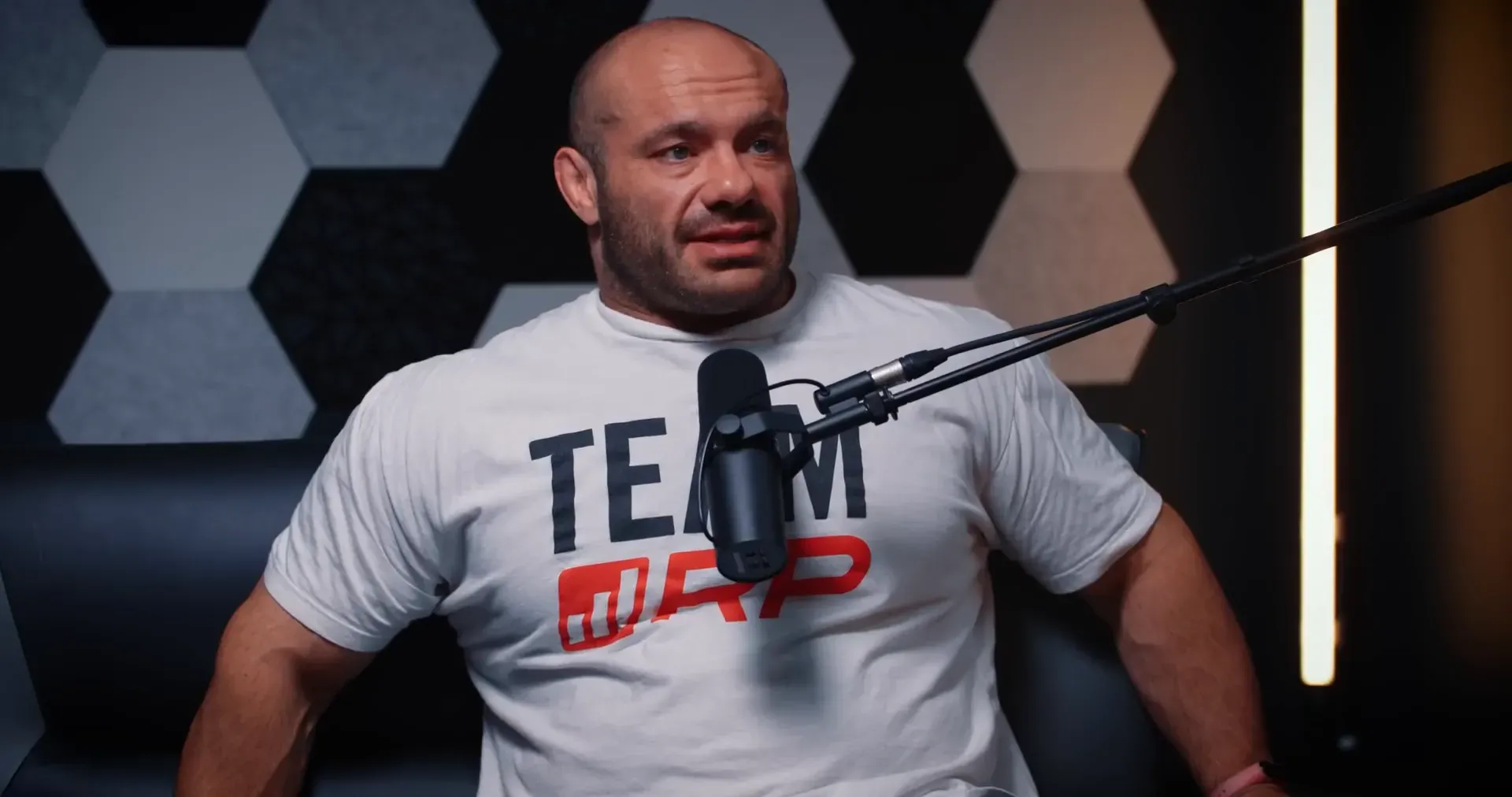
One common myth surrounding dips is that they are inherently dangerous for the shoulders. This belief often stems from improper form and lack of strength. When performed with proper technique, dips can actually strengthen the shoulder joint.
It's crucial to focus on your body mechanics during dips. Avoid excessive forward lean if you have shoulder issues. Instead, keep your shoulders down and back to minimize strain. Gradually increase your range of motion as your strength improves.
Research indicates that dips can be safe for most lifters. In fact, they can enhance shoulder stability and strength when integrated into a balanced program. Don’t let myths keep you from this effective exercise.
Bicep Breakthrough: Lying Dumbbell Bicep Curls
Lying dumbbell bicep curls are a game changer for arm training. This exercise isolates the biceps effectively while minimizing shoulder involvement. By lying down, you can achieve a deeper stretch at the bottom of the movement.
This position also allows for better force application throughout the curl. It helps maintain tension on the biceps, leading to greater muscle hypertrophy. If you haven’t tried this exercise yet, it’s time to add it to your routine.
Experiment with different angles and grips to find what works best for you. A low incline can enhance the stretch, making the exercise even more effective.
Optimizing Bicep Training: Upper Arm Positioning
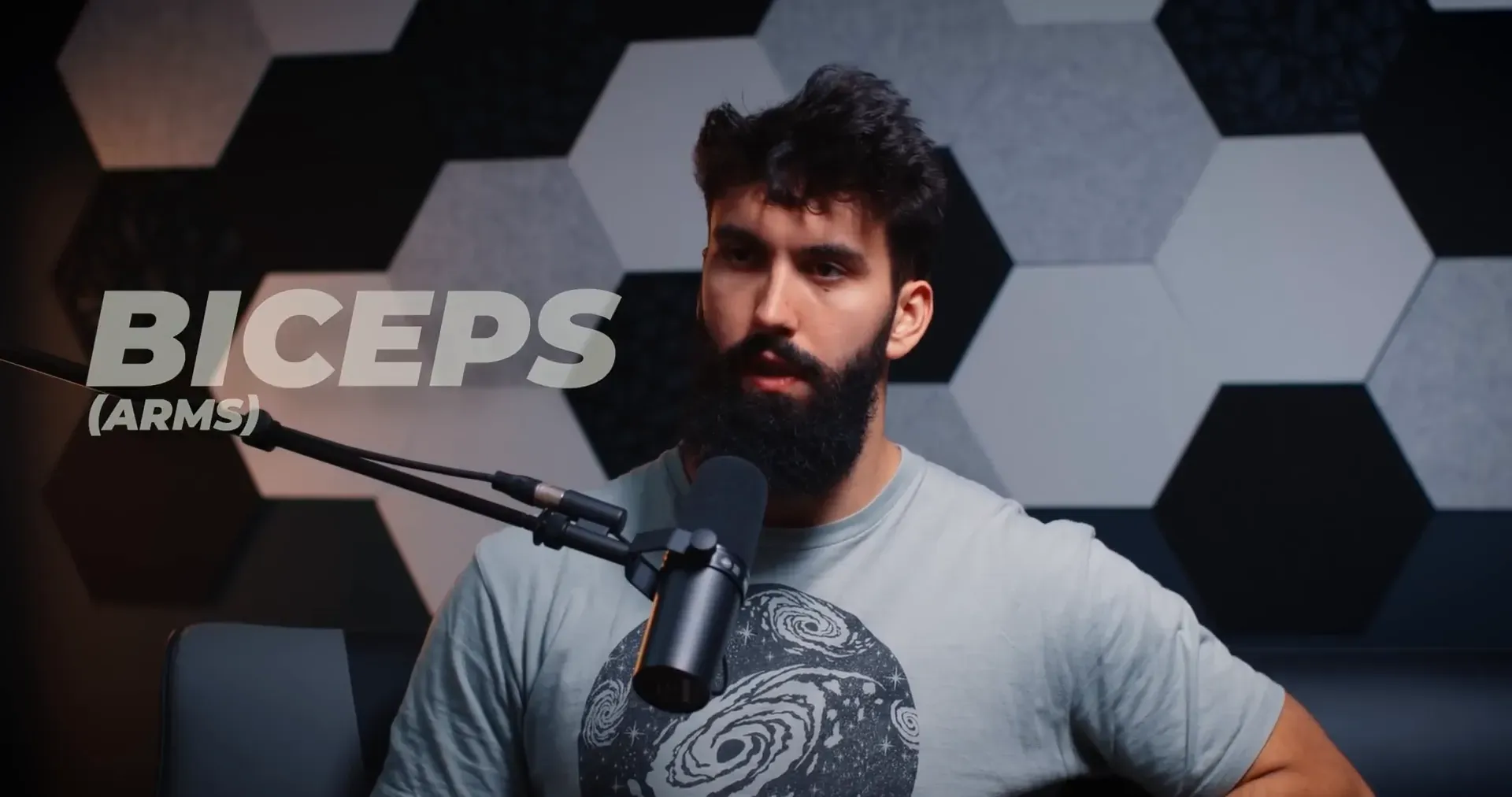
Upper arm positioning is crucial for maximizing bicep engagement. When performing curls, keep your upper arms as stationary as possible. This isolates the biceps and prevents other muscles from taking over the movement.
Whether standing or lying down, focus on maintaining this position. You can also adjust your grip width to target different parts of the biceps. A wider grip emphasizes the inner biceps, while a narrower grip focuses on the outer head.
Incorporate variations like hammer curls or reverse curls to hit the biceps from different angles. This will lead to more balanced development and greater strength gains.
Tricep Training: The JM Press
The JM Press is an underrated gem for tricep development. This exercise combines elements of both the skull crusher and the close-grip bench press. It targets the triceps effectively while also engaging the chest and shoulders.
To perform the JM Press, lie on a bench and hold the barbell above your chest. Lower the bar toward your neck, keeping your elbows tucked in. This position places maximum tension on the triceps, especially the medial and lateral heads.
One of the main benefits of the JM Press is the stretch it provides. When you lower the bar, your forearms become parallel to the ground, optimizing the force curve. This leads to greater muscle activation and growth.
Incorporate the JM Press into your routine. Start with lighter weights to master the form. As you become more comfortable, gradually increase the load for better results.
The Power of Pull-Ups for Back Development
Pull-ups are often underrated in back training. Many lifters gravitate towards machines, neglecting this classic bodyweight movement. However, pull-ups offer unparalleled benefits for overall back development.
Not only do they target the lats, but they also engage the rhomboids, traps, and biceps. This compound movement builds width and thickness in your back. The key is to perform them with control, focusing on the eccentric phase.
As you pull yourself up, aim for a full range of motion. Lower yourself slowly to maximize muscle engagement. Progress by adding weight or increasing repetitions over time. Pull-ups can be a cornerstone of your back training regimen.
Cable Flexion Rows: A Comprehensive Back Exercise
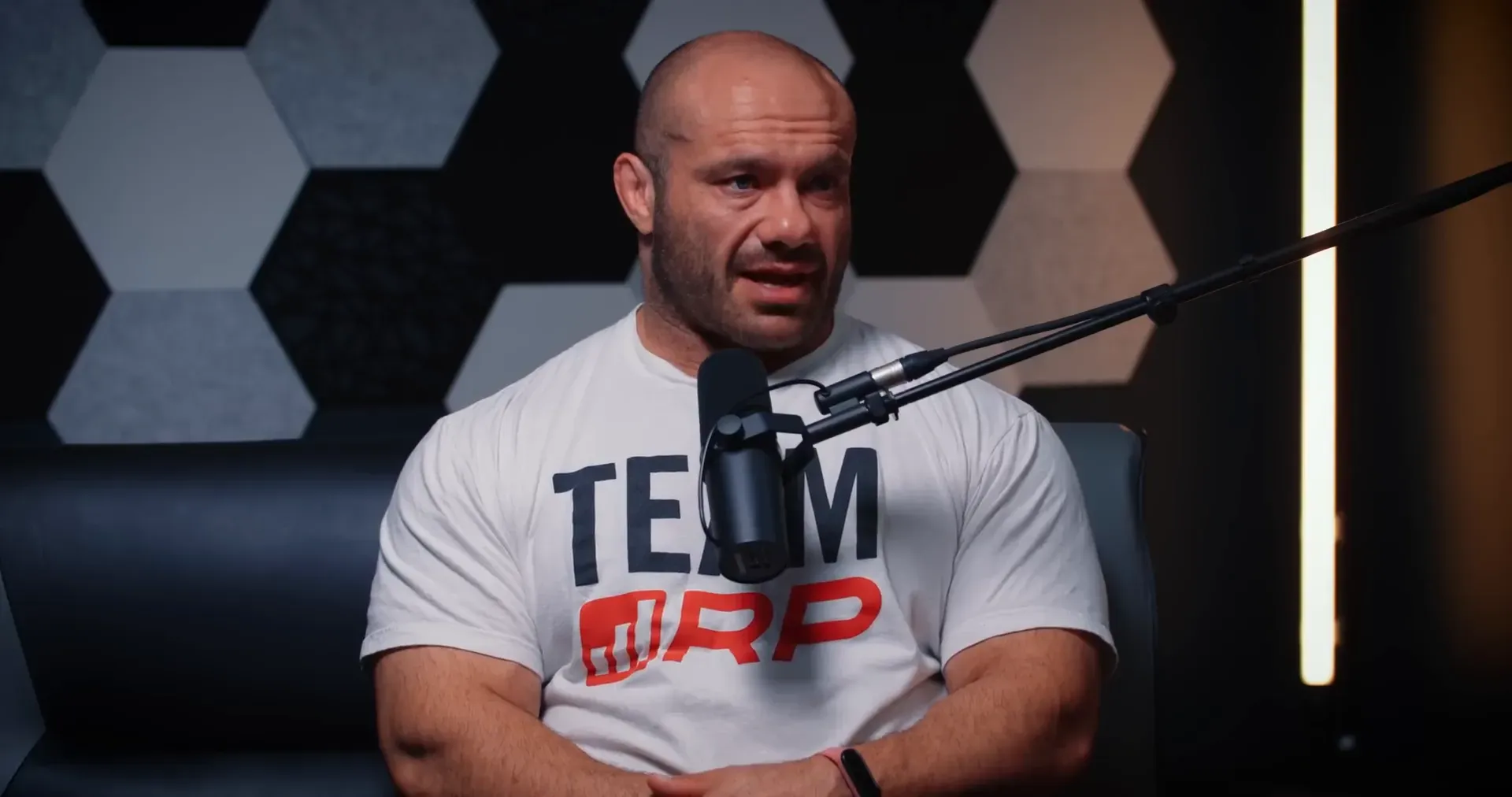
Cable flexion rows are another underrated exercise for back development. This movement targets the lats and spinal erectors while also engaging the traps and mid-back muscles. The versatility of cable machines allows for various angles and grips, enhancing your workout.
To perform cable flexion rows, adjust the cable to a low position. Stand with your feet shoulder-width apart and pull the handle towards your torso. Keep your elbows close to your body and focus on squeezing your shoulder blades together at the top of the movement.
One of the major advantages of cable flexion rows is the constant tension they provide. Unlike free weights, cables keep the resistance consistent throughout the entire range of motion. This leads to improved muscle growth and strength.
Incorporate different grips—overhand, underhand, or neutral—to target various parts of the back. Experiment with your stance and body angle to find what works best for you.
Leg Training: The Benefits of Belt Squats
Belt squats are an exceptional exercise for building leg strength without the stress on the spine. This movement allows you to focus on your quads while minimizing axial loading. It’s ideal for those who struggle with traditional squats due to back issues.
To perform belt squats, attach a belt to a squat machine and adjust the weight. Stand with your feet shoulder-width apart and squat down. Ensure your heels stay flat on the ground while driving through your legs to return to the starting position.
The beauty of belt squats lies in their ability to isolate the quads. You can perform high-rep sets without the systemic fatigue often associated with barbell squats. This makes them perfect for hypertrophy training.
Incorporate belt squats into your leg day routine. They can serve as a primary or accessory movement. As you get comfortable, increase the weight and volume for better results.
Nordic Curls: Exceptional Hamstring Training
Nordic curls are a phenomenal exercise for hamstring development. They emphasize the eccentric contraction, which is crucial for building strength and preventing injuries. This movement can be challenging but offers significant benefits when performed correctly.
To perform a Nordic curl, kneel on a soft surface with your feet secured. Slowly lower your torso towards the ground, keeping your hips extended. Use your hamstrings to control the descent, then push yourself back up to the starting position.
For beginners, it can be beneficial to use a resistance band for assistance. As you build strength, aim to perform the movement unassisted. Nordic curls not only strengthen the hamstrings but also improve overall athletic performance.
Incorporate them into your leg workouts for balanced development. They can be performed at the end of your workout or as part of a dedicated hamstring day.
Glute Activation: Front Foot Elevated Smith Machine Lunges
Front foot elevated Smith machine lunges are an underrated glute exercise. This variation emphasizes the glutes while reducing strain on the knees. By elevating the front foot, you increase the range of motion, leading to better muscle activation.
To perform this exercise, set up a Smith machine with the bar at shoulder height. Place one foot on an elevated surface while the other remains on the ground. Lower your body into a lunge, keeping your chest up and core engaged. Push through your front heel to return to the starting position.
The front foot elevation shifts the focus to the glutes and quads. This exercise is especially beneficial for those looking to improve their glute strength and aesthetics. Start with lighter weights to master the form before progressing to heavier loads.
Shoulder Development: Lying Side Laterals
Lying side laterals are a powerful yet often overlooked exercise for shoulder development. This movement isolates the lateral deltoids, allowing for maximum tension and growth. By lying on your side, you eliminate momentum, ensuring that the focus remains on the targeted muscles.
To perform lying side laterals, lie on your side on a flat bench or the floor. Hold a dumbbell in your top hand and keep your bottom arm extended along your side. Lift the dumbbell in a controlled manner, keeping your elbow slightly bent, and raise it until it’s parallel to the ground. Slowly lower it back down and repeat.
This exercise not only targets the medial deltoids but also engages the stabilizer muscles in your shoulders and core. Incorporate lying side laterals into your shoulder routine for enhanced width and definition.
Rear Deltoid Training: Maximizing Back Work
When it comes to rear deltoid training, many lifters focus solely on isolation exercises. However, integrating rear deltoid work into your back training can yield significant results. Movements like bent-over rows and face pulls can effectively target the rear delts while also engaging the larger back muscles.
To maximize rear deltoid engagement, aim for a neutral grip during rows. This positioning allows for better shoulder alignment and greater activation of the rear deltoids. Additionally, incorporating face pulls into your routine can enhance shoulder stability and promote balanced muscle development.
Consider adding rear delt flies to your routine as well. These can be performed seated or bent over, and they specifically isolate the rear deltoids. For optimal results, use moderate weights and focus on the mind-muscle connection.
Deficit Deadlifts: A Game-Changer for Overall Strength
Deficit deadlifts are an exceptional exercise for building overall strength and muscle mass. By increasing the range of motion, you challenge your muscles in a new way. This leads to greater muscle activation, particularly in the hamstrings and glutes.
To perform deficit deadlifts, stand on a platform or weight plate that elevates your feet. This increase in height forces you to lower the barbell further than a standard deadlift. Focus on maintaining proper form throughout the movement, engaging your core and keeping your back straight.
Deficit deadlifts not only enhance strength but also improve power and explosiveness. They are particularly beneficial for athletes in sports that require quick, powerful movements. Incorporate them into your routine, starting with lighter weights to master the technique before progressing.
The Ultimate Muscle Growth Workout
If you’re tired of the same old exercises and want to unlock new muscle gains, this program is for you. Inspired by Dr. Milo Wolf, this underrated workout plan is built around hidden gem movements that challenge your muscles in fresh ways. From deficit deadlifts for strength to belt squats for safer leg training, every workout is optimized for growth.
Overview
- Ideal for: Intermediate to advanced lifters looking to break through plateaus
- Equipment needed: Barbell, dumbbells, cables, cambered bar, Smith machine, dip station
- Key focus: Maximizing hypertrophy and strength with underrated muscle growth exercises
Workout Split
- Day 1: Chest & Triceps
- Day 2: Back & Biceps
- Day 3: Legs & Core
- Day 4: Shoulders & Arms
- Day 5: Full Body (Optional)
Day 1: Chest & Triceps
| Exercise | Sets | Reps | Rest |
|---|---|---|---|
| Cambered Bar Incline Press | 4 | 8-12 | 90s |
| Dips (Weighted if possible) | 4 | 8-10 | 90s |
| JM Press | 3 | 10-12 | 60s |
| Cable Fly (High to Low) | 3 | 12-15 | 45s |
| Triceps Rope Pushdowns | 3 | 12-15 | 45s |
Pro Tips:
- Control the eccentric (lowering phase) for better chest activation
- Keep shoulders back during dips to avoid unnecessary strain
- JM Press is NOT a skull crusher—keep elbows tucked for maximum triceps activation
Day 2: Back & Biceps
| Exercise | Sets | Reps | Rest |
|---|---|---|---|
| Pull-Ups (Weighted if possible) | 4 | 8-12 | 90s |
| Cable Flexion Rows | 4 | 10-12 | 90s |
| Lying Dumbbell Bicep Curls | 3 | 12-15 | 60s |
| Reverse Grip Barbell Rows | 3 | 10-12 | 60s |
| Face Pulls | 3 | 12-15 | 45s |
Pro Tips:
- Pull-ups beat lat pulldowns—use assisted reps if needed
- Lying curls isolate biceps better—keep upper arms locked in place
- Face pulls improve rear delts and shoulder health—use a light weight with strict form
Day 3: Legs & Core
| Exercise | Sets | Reps | Rest |
|---|---|---|---|
| Belt Squats | 4 | 10-12 | 90s |
| Deficit Deadlifts | 4 | 6-8 | 120s |
| Nordic Curls (Assisted if needed) | 3 | 6-10 | 90s |
| Front Foot Elevated Smith Lunges | 3 | 10-12 | 60s |
| Hanging Leg Raises | 3 | 12-15 | 45s |
Pro Tips:
- Deficit deadlifts increase ROM—keep core braced
- Belt squats protect your back—go for full depth
- Nordic curls? Brutal but effective—use a band for assistance if needed
Day 4: Shoulders & Arms
| Exercise | Sets | Reps | Rest |
|---|---|---|---|
| Lying Side Laterals | 4 | 12-15 | 60s |
| Reverse Grip Dumbbell Press | 3 | 10-12 | 60s |
| Hammer Curls | 3 | 12-15 | 45s |
| Cable Rear Delt Flys | 3 | 12-15 | 45s |
| Rope Triceps Extensions | 3 | 12-15 | 45s |
Pro Tips:
- Lying side laterals remove momentum—slow down for maximum delt activation
- Reverse grip press keeps shoulders safer while hitting the front delts
- Use a rope for triceps extensions—better stretch and contraction
Day 5: Full Body (Optional)
| Exercise | Sets | Reps | Rest |
|---|---|---|---|
| Weighted Pull-Ups | 4 | 8-10 | 90s |
| Belt Squats | 4 | 10-12 | 90s |
| JM Press | 3 | 10-12 | 60s |
| Cable Flexion Rows | 3 | 10-12 | 60s |
| Hanging Leg Raises | 3 | 12-15 | 45s |
Pro Tips:
- Keep rest short—this day is for overall volume, not max weight
- Perfect for reinforcing weak points—focus on form and control
- If feeling fatigued, skip or reduce volume—this is an optional day
Notes on Program Execution
- Progressive overload is key—increase weight, reps, or intensity weekly
- Prioritize form over weight—underrated exercises require strict technique
- Adjust as needed—if an exercise feels awkward, tweak grip, stance, or angle
- Use a logbook—track performance to ensure steady improvement
This underrated muscle growth plan blends strength, hypertrophy, and injury prevention, making it a highly effective alternative to traditional routines. It’s designed to help break plateaus and activate muscles in new ways.
Want to automate that workout and more? Put your progress on autopilot with Dr. Muscle AI. Try it free.
Expert Corner: Proven Strategies & Hidden Gems
Practical Applications
- Upgrade Your Chest Training – Swap one incline bench press session per week with cambered bar incline presses. The increased range of motion activates more upper chest fibers, leading to a fuller, stronger chest.
- Boost Arm Growth with Smart Isolation – Add lying dumbbell curls at the end of your bicep workout. Perform 3 sets of 12-15 reps, focusing on the deep stretch at the bottom for maximum hypertrophy.
- Protect Your Joints, Build Stronger Legs – If back squats aggravate your lower back, replace them with belt squats. Perform 4 sets of 10-12 reps to hit your quads hard while reducing spinal stress.
- Strengthen Your Posterior Chain – Add deficit deadlifts once a week to increase hamstring and glute activation. Keep the deficit small (1-2 inches) and perform 3-4 sets of 5-8 reps for better power and strength.
- Maximize Shoulder Safety While Growing Your Chest – If dips feel uncomfortable, use assisted dip machines or resistance bands to build strength before going unassisted. Gradually increase range and depth to keep shoulders safe while reaping the benefits.
Examples
- Struggling with bicep peaks? Swap barbell curls for lying dumbbell curls—better isolation, more stretch, bigger growth!
- Knee pain during lunges? Try front foot elevated Smith machine lunges—more glute activation, less joint strain.
This setup fits seamlessly into any routine—just tweak your exercises, reps, and focus!
Fact-Check of Key Points
- Dips and Shoulder Safety – The article states that dips are safe with proper form, which is mostly true. However, dips can still aggravate pre-existing shoulder issues, especially for those with impingement or mobility limitations. Adjusting the range of motion and using parallel bars instead of rings can help reduce risk.
- Lying Dumbbell Bicep Curls for Better Isolation – While this exercise does reduce shoulder involvement, some anterior delt activation still occurs, especially if the weight is too heavy. Strict form and a slight incline instead of a flat bench can help maintain isolation.
- Deficit Deadlifts for Explosiveness – Deficit deadlifts increase range of motion, but the claim that they boost power and explosiveness is context-dependent. This variation emphasizes strength off the floor but can slow down bar speed, making it less ideal for maximal explosiveness than Olympic lifts.
- Belt Squats for Joint-Friendly Leg Training – Belt squats are great for reducing spinal load, but they don’t eliminate joint stress. The knee angle and foot placement still affect pressure on the joints. Adjust stance width and foot angle based on individual mobility to maximize comfort.
- Pull-Ups as the Ultimate Back Builder – Pull-ups are phenomenal for width and overall back development, but they don’t fully replace rows. Rows target thickness and mid-back musculature, so a combination of both is ideal for complete back growth.
Overall, the article provides solid advice, but slight adjustments in exercise selection, form modifications, and individual biomechanics can make these movements even safer and more effective.
More Little-Known Tips for Muscle Growth Exercises
- Squeeze, Don’t Just Lift – It’s not just about moving weight—it’s about maximizing tension. Whether you’re doing JM Press for triceps or lying bicep curls, focus on squeezing the muscle hard at the peak of each rep. This builds mind-muscle connection and leads to bigger gains.
- Go Slower on the Way Down – Eccentric (lowering) phases create more muscle damage—the good kind that leads to growth! Try 3-4 second negatives on deficit deadlifts, Nordic curls, or cable rows to increase strength and hypertrophy.
- Vary Your Grips & Angles – Your muscles adapt fast, so switch things up. Use a neutral grip on pull-ups for better shoulder comfort, wide grip on cable flexion rows for more lat stretch, and hammer curls for fuller biceps development.
- Add Resistance to Bodyweight Moves – Weighted pull-ups, dips, and Nordic curls turn great exercises into muscle-building monsters. Start by adding just 5-10 lbs with a dip belt or dumbbell between your feet, and progress over time.
- Train Through Different Ranges of Motion – Mix deep-range exercises (e.g., deficit deadlifts, cambered bar presses) with partial-rep movements (e.g., rack pulls, JM Press lockouts) to maximize both stretch and overload.
Small tweaks = big results. Try these underrated hacks next time you train and watch your muscle growth take off!
Diet for Muscle Building
Training hard is only half the battle—nutrition makes or breaks muscle growth. Without the proper fuel, strength gains stall, recovery slows, and muscle-building suffers. Here’s how to optimize your diet for maximum gains.
Key Nutrition Principles
- Prioritize Protein – Aim for 0.8-1.2g of protein per pound of body weight daily. Top choices include lean meats, eggs, whey, Greek yogurt, and tofuproper.
- Fuel with Carbs – Carbs power performance! Stick to whole grains, potatoes, rice, oats, and fruit for sustained energy and better recovery.
- Healthy Fats Matter – Hormones and joint health depend on fats. Include avocados, nuts, olive oil, and fatty fish.
- Caloric Surplus is Key – Consume 250-500 extra calories per day above maintenance to gain muscle. Too little = no growth.
- Hydration & Electrolytes – Muscles need water and minerals. Drink at least 3L of water daily and add salt and potassium-rich foods to stay hydrated.
Pre & Post-Workout Nutrition
- Pre-Workout: Carbs + Protein (1-2 hours before training)
- Example: Oats + Whey Protein + Banana
- Why? Fuels muscles and prevents muscle breakdown
- Post-Workout: Fast-Digesting Protein + Carbs (within 30-60 mins)
- Example: Chicken + Rice + Spinach OR Whey + Honey + Rice Cakes
- Why? Boosts muscle repair, glycogen replenishment, and recovery
Example Muscle-Building Meal Plan
| Meal | Example Foods |
|---|---|
| Breakfast | Scrambled eggs, whole wheat toast, avocado |
| Snack | Greek yogurt, almonds, honey |
| Lunch | Grilled chicken, quinoa, steamed veggies |
| Pre-Workout | Oats, banana, protein shake |
| Post-Workout | Chicken, white rice, broccoli |
| Dinner | Salmon, sweet potato, mixed greens |
| Snack | Cottage cheese, peanut butter, dark chocolate |
Supplements That Help
- Whey Protein – Quick & easy protein source for hitting daily intake
- Creatine Monohydrate – Boosts strength & muscle growth (5g daily)
- Electrolytes – Essential for hydration & muscle contractions
- Omega-3s – Supports recovery, heart health, and joint function
Science of Muscle Growth: Underrated Exercises and Hypertrophy
Muscle hypertrophy and strength development are influenced by various training parameters, including load, volume, frequency, and exercise selection. While traditional exercises dominate fitness routines, underrated exercises can provide unique benefits for muscle growth. Recent systematic reviews and meta-analyses highlight key insights into training strategies that optimize hypertrophy and strength gains.
Key Findings from Recent Research
- Training Load and Hypertrophy
Research shows that hypertrophy can be achieved with both low and high-load resistance training, provided volume is equated (Schoenfeld et al., 2017). High loads, however, are superior for strength development (Lopez et al., 2020). - Training Volume and Sets
Performing multiple sets per exercise results in significantly greater muscle hypertrophy than single sets (Krieger, 2010). Volume remains a crucial factor in hypertrophy, regardless of load. - Exercise Selection and Order
Starting workouts with multi-joint exercises maximizes strength gains, whereas hypertrophy benefits remain similar regardless of exercise order (Nunes et al., 2020). - Training to Failure
Training to muscle failure does not necessarily enhance hypertrophy or strength gains when volume is equated. It may provide slight benefits for resistance-trained (experienced) individuals, where a significant effect of training to failure on muscle hypertrophy was found (Grgic et al., 2020).
Practical Applications of Science
- Incorporate Variety: Combining different resistance loads and training methods (e.g., high-rep and low-rep work) ensures well-rounded hypertrophy.
- Prioritize Volume Over Load: Ensuring adequate training volume through multiple sets is more critical for hypertrophy than focusing solely on heavy weights.
- Optimize Exercise Order: Begin with multi-joint compound movements to maximize strength, while isolation movements can be used for targeted hypertrophy.
Scientific Conclusion
Muscle hypertrophy can be effectively achieved with various training strategies, provided volume is sufficient. While heavy loads optimize strength, hypertrophy is possible across a range of resistances. Incorporating a mix of traditional and underrated exercises, along with strategic exercise order and training volume, can maximize muscle growth.
My Opinion on Muscle Growth Exercises: Stop Avoiding What’s Hard
I see it all the time—people sticking to easy, comfortable exercises instead of the ones that actually build muscle. Sure, cable rows and leg presses feel great, but if you’re never doing pull-ups or deficit deadlifts, you’re leaving gains on the table. The best muscle growth exercises aren’t always the ones that feel nice—they’re the ones that challenge your weaknesses.
I believe most people avoid dips, Nordic curls, and heavy pull-ups because they’re humbling. It’s easier to stack plates on a machine than to master your own bodyweight. But avoiding harder, full-range movements is exactly why so many lifters hit plateaus. If your hamstrings are weak, don’t rely on curls—force yourself through slow Nordic curls. Can’t do pull-ups? Start with assisted reps and work up—machines won’t build that raw pulling strength.
Some say machines and isolation exercises are "just as good", but I don’t buy it. They have their place, but they shouldn’t replace foundational strength work. If you’re serious about building muscle, stop dodging the tough stuff and start pushing through the exercises that make you uncomfortable—that’s where the real growth happens.
Final Thoughts: Unlock More Gains with Better Tools
You’re missing out on serious muscle growth if you're only doing basic lifts. Adding exercises like deficit deadlifts, cable flexion rows, and dips can hit weak points, prevent injuries, and accelerate progress. Don’t be the lifter stuck in a plateau because you refuse to switch things up!
The problem? Most people don’t know when or how to change their workouts. That’s why Dr. Muscle is a game-changer—it analyzes your training, picks the best exercises, and auto-adjusts based on your progress. No more second-guessing—just smarter, more effective training.
Want to stop guessing and start growing? Try Dr. Muscle for free today.
FAQ
What are some underrated exercises for muscle growth?
Underrated muscle growth exercises include cambered bar incline presses for upper chest, JM Press for triceps, belt squats for leg development, and Nordic curls for hamstring strength. These exercises provide unique benefits that traditional lifts often miss, helping to break plateaus and reduce injury risks.
How can I incorporate lesser-known exercises into my workout routine?
Incorporate lesser-known muscle growth exercises by swapping one traditional movement per workout with an alternative. For example, replace standard bench presses with cambered bar incline presses or leg presses with belt squats. Adjust volume and intensity gradually to ensure proper adaptation.
Are there any effective alternatives to traditional muscle-building exercises?
Yes, effective alternatives include dips instead of decline bench press, pull-ups instead of lat pulldowns, and lying dumbbell curls instead of standing barbell curls. These exercises often provide a greater range of motion, better muscle activation, and reduced joint strain.
What are the benefits of using underrated exercises?
Underrated muscle growth exercises target muscles from different angles, reduce joint stress, and help prevent imbalances. They can also increase muscle engagement by improving range of motion and activating stabilizer muscles. Many of these movements are less crowded at the gym, allowing for more focused training.
How often should I include underrated exercises in my routine?
Underrated muscle growth exercises should be included regularly but strategically, about one or two per workout. Rotating these movements prevents overuse injuries while keeping workouts fresh and stimulating new muscle growth. Progress can be tracked by gradually increasing reps, load, or range of motion.
Can I replace traditional exercises with underrated ones?
Yes, traditional movements can be replaced with underrated muscle growth exercises, as long as all major muscle groups are still being trained effectively. For example, belt squats can replace back squats for those with spinal issues, and pull-ups can substitute for lat pulldowns to enhance overall back strength.
Are these exercises suitable for beginners?
Yes, many underrated muscle growth exercises can be adapted for beginners. Assisted dips, resistance band Nordic curls, and machine belt squats allow for gradual strength progression. Beginners should start with lighter weights and controlled reps to master proper form before increasing intensity.
